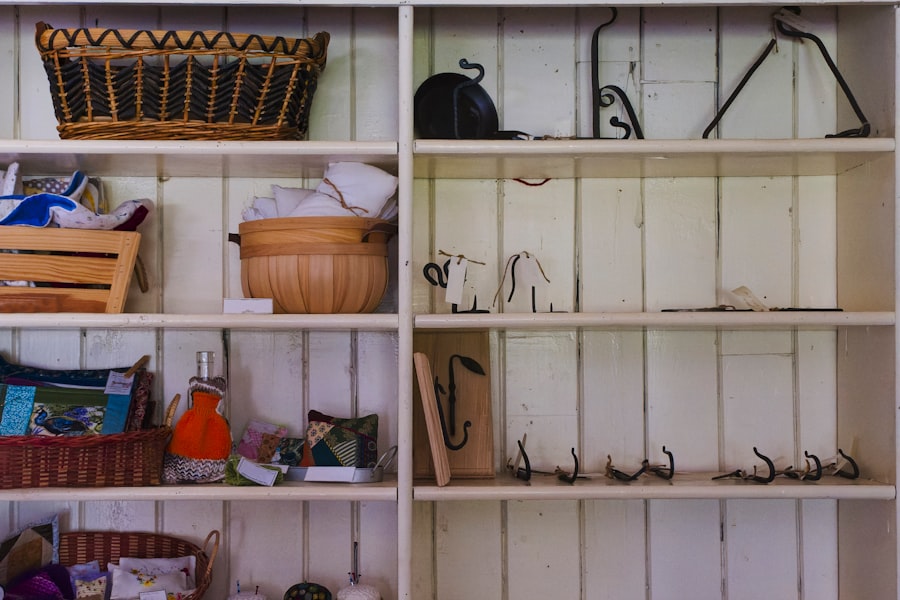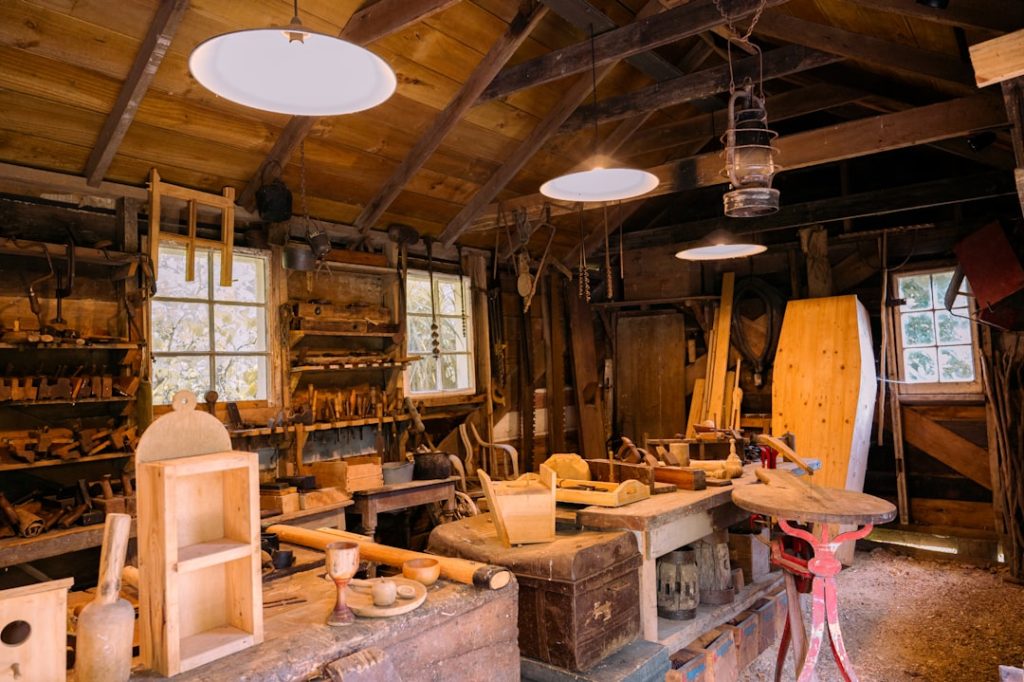Custom millwork cabinets offer a plethora of advantages that can significantly enhance both the functionality and aesthetic appeal of a space. One of the primary benefits is the ability to tailor the cabinets to meet specific needs and preferences. Unlike pre-fabricated options, custom millwork allows homeowners to dictate dimensions, styles, and features that align with their unique requirements.
For instance, a family with young children may prioritize safety features and durable materials, while a gourmet chef might focus on maximizing storage for kitchen tools and appliances. This level of customization ensures that every inch of space is utilized effectively, leading to a more organized and efficient environment. Moreover, custom millwork cabinets can elevate the overall design of a room.
They can be crafted to complement existing architectural elements or to create a striking focal point. The craftsmanship involved in custom millwork often results in superior quality compared to mass-produced alternatives. Skilled artisans can incorporate intricate details, such as molding, inlays, and custom hardware, which can add character and sophistication to any room.
This attention to detail not only enhances the visual appeal but also contributes to the longevity of the cabinets, making them a worthwhile investment for homeowners looking to improve their living spaces.
Key Takeaways
- Custom millwork cabinets offer tailored benefits including enhanced aesthetics and optimized space usage.
- Selecting the right materials is crucial for durability and style in custom millwork cabinets.
- Designing cabinets to fit your specific space ensures functionality and seamless integration.
- Incorporating functional features like adjustable shelves and built-in organizers maximizes usability.
- Collaborating with a professional helps realize your unique vision and ensures quality craftsmanship.
Choosing the Right Materials for Custom Millwork Cabinets
Selecting the appropriate materials for custom millwork cabinets is crucial in achieving both durability and aesthetic appeal. Wood is often the material of choice due to its versatility and timeless beauty. Hardwoods such as oak, maple, cherry, and walnut are popular for their strength and rich grain patterns.
Each type of wood brings its own unique character; for example, cherry wood darkens beautifully over time, while oak offers a more rustic appearance with its prominent grain. Additionally, engineered woods like plywood or MDF (medium-density fiberboard) can be excellent alternatives, especially when budget constraints are a consideration. These materials can be finished to mimic the look of solid wood while providing enhanced stability and resistance to warping.
In addition to wood, other materials such as metal and glass can be incorporated into custom millwork designs to create a modern or industrial aesthetic. Metal accents can add an edgy touch, while glass doors can provide visibility for displaying cherished items or fine china. The choice of materials should also take into account the intended use of the cabinets; for instance, moisture-resistant materials are essential in kitchen or bathroom applications where humidity levels fluctuate.
Ultimately, the right combination of materials will not only enhance the visual appeal of the cabinets but also ensure they withstand the test of time.
Designing Custom Millwork Cabinets to Fit Your Space

The design process for custom millwork cabinets begins with a thorough assessment of the space in which they will be installed. This involves measuring dimensions accurately and considering architectural features such as windows, doors, and existing furniture. A well-designed cabinet should seamlessly integrate into its surroundings while maximizing available space.
For example, in a small kitchen, corner cabinets with pull-out shelves can make use of otherwise wasted areas, providing additional storage without compromising on style. Furthermore, the design should reflect the homeowner’s personal style and functional needs. Traditional designs may feature raised panel doors and ornate moldings, while contemporary styles often embrace clean lines and minimalistic hardware.
It’s essential to consider how the cabinets will be used daily; incorporating features like adjustable shelving or built-in dividers can enhance usability. Collaborating with a designer who understands spatial dynamics and aesthetic principles can lead to innovative solutions that transform a space into a cohesive and functional area.
Incorporating Functional Features into Custom Millwork Cabinets
| Feature | Description | Benefit | Typical Dimensions | Material Options |
|---|---|---|---|---|
| Soft-Close Hinges | Hinges that close doors gently and quietly | Prevents slamming, extends cabinet life | Standard hinge size 3.5″ x 3.5″ | Steel, Stainless Steel |
| Pull-Out Shelves | Shelves that slide out for easy access | Improves accessibility and organization | Width: 12″-24″, Depth: 18″-24″ | Wood, Metal, Composite |
| Integrated Lighting | Built-in LED lighting inside cabinets | Enhances visibility and aesthetics | LED strips typically 12″ to 48″ | LED, Aluminum housing |
| Adjustable Shelving | Shelves with adjustable height settings | Customizable storage space | Standard shelf thickness 0.75″ to 1″ | Wood, MDF, Plywood |
| Built-in Charging Stations | Electrical outlets and USB ports integrated | Convenient device charging | Outlet box approx. 4″ x 4″ | Plastic, Metal, Wood enclosure |
| Hidden Compartments | Secret storage spaces within cabinetry | Secure and discreet storage | Varies by design | Wood, MDF |
| Lazy Susan Inserts | Rotating shelves for corner cabinets | Maximizes corner space usability | Diameter 24″-36″ | Wood, Metal |
Functionality is a key aspect of custom millwork cabinets that should not be overlooked during the design process. Homeowners should consider incorporating features that enhance usability and convenience. For instance, pull-out drawers with soft-close mechanisms can provide easy access to items stored at the back of deep cabinets, reducing the frustration often associated with traditional shelving.
Additionally, built-in organizers for utensils or spices can streamline kitchen workflows, making cooking more efficient. Another functional feature worth considering is integrated lighting. LED strip lights installed within cabinets can illuminate shelves and highlight decorative items or dishware, adding both practicality and ambiance to the space.
In bathrooms, custom millwork cabinets can include hidden compartments for toiletries or built-in hampers for laundry, promoting organization and cleanliness. By prioritizing functionality alongside aesthetics, homeowners can create custom millwork cabinets that not only look stunning but also serve their intended purpose effectively.
Selecting the Perfect Finish for Custom Millwork Cabinets
The finish applied to custom millwork cabinets plays a significant role in determining their final appearance and durability. A variety of finishes are available, ranging from stains that enhance the natural beauty of wood grain to paints that offer a bold pop of color. Staining allows homeowners to maintain the organic look of wood while adding depth and richness; for example, a dark walnut stain can impart an air of sophistication to traditional cabinetry.
On the other hand, painted finishes provide an opportunity for creativity and personalization. Soft pastels can evoke a sense of calm in a bathroom setting, while vibrant hues can energize a kitchen space. It’s important to consider the overall color scheme of the room when selecting a finish; coordinating cabinet colors with wall paint or countertops can create a harmonious look.
Additionally, protective coatings such as polyurethane or lacquer can enhance durability by providing resistance against scratches and moisture, ensuring that the cabinets maintain their beauty over time.
Maximizing Storage and Organization with Custom Millwork Cabinets

One of the most significant advantages of custom millwork cabinets is their ability to maximize storage and organization in any space. By designing cabinets that fit specific dimensions and needs, homeowners can create solutions that traditional cabinetry simply cannot offer. For instance, in a home office, custom millwork can include built-in bookshelves that utilize vertical space effectively while providing ample room for files and office supplies.
In kitchens, incorporating features like pull-out pantry shelves or lazy Susans can make accessing ingredients easier while keeping everything neatly organized. Custom drawer dividers can help separate utensils or tools by category, reducing clutter and streamlining cooking processes. In addition to maximizing storage capacity, these tailored solutions contribute to an overall sense of orderliness within the home environment.
Customizing Your Space with Unique Custom Millwork Cabinet Designs
Custom millwork cabinets provide an exceptional opportunity for homeowners to express their individuality through unique designs that reflect personal style. Unlike standard cabinetry options that may lack character, custom designs allow for creative expression through various elements such as door styles, hardware choices, and decorative accents. For example, incorporating glass-front doors with intricate mullions can add elegance to a display cabinet while showcasing cherished items.
Moreover, unique design elements such as open shelving or integrated seating areas can transform traditional cabinetry into multifunctional spaces that cater to modern lifestyles. In living rooms or dining areas, custom millwork can include built-in benches with storage underneath or wall units that combine shelving with media storage. These innovative designs not only enhance functionality but also contribute to creating inviting spaces that feel personalized and thoughtfully curated.
Working with a Professional to Bring Your Custom Millwork Cabinet Vision to Life
To fully realize the potential of custom millwork cabinets, collaborating with a professional designer or craftsman is essential. Professionals bring expertise in design principles, material selection, and construction techniques that can elevate a project from concept to completion. They can assist in translating ideas into practical designs while ensuring that all elements work harmoniously together within the space.
Additionally, professionals have access to high-quality materials and skilled labor that may not be readily available to DIY enthusiasts. They can guide homeowners through the entire process—from initial consultations and design sketches to final installation—ensuring that every detail aligns with the homeowner’s vision. By leveraging their knowledge and experience, homeowners can achieve stunning results that not only meet their functional needs but also enhance the overall beauty of their living spaces.



